Related Research Articles
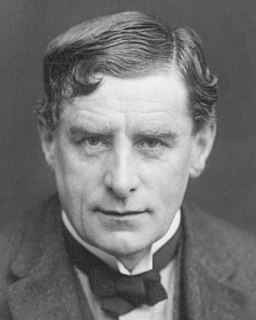
Walter Richard Sickert was a German-born British painter and printmaker who was a member of the Camden Town Group of Post-Impressionist artists in early 20th-century London. He was an important influence on distinctively British styles of avant-garde art in the mid- and late 20th century.
Richard Sheepshanks was a British astronomer.

Helen Allingham was a British watercolourist and illustrator of the Victorian era.
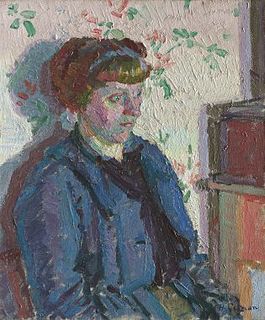
Laura Sylvia Gosse was an English painter and printmaker. She also ran an art school with the painter Walter Sickert.
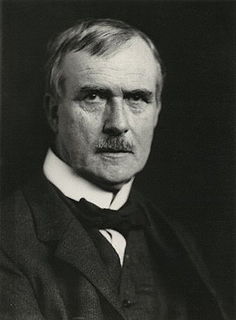
Philip Wilson Steer was a British painter of landscapes, seascapes plus portraits and figure studies. He was also an influential art teacher. His sea and landscape paintings made him a leading figure in the Impressionist movement in Britain but in time he turned to a more traditional English style, clearly influenced by both John Constable and J. M. W. Turner, and spent more time painting in the countryside rather than on the coast. As a painting tutor at the Slade School of Art for many years he influenced generations of young artists.
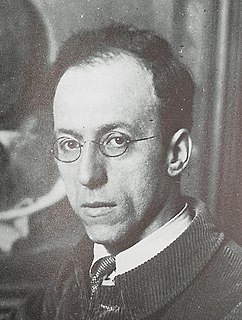
Bernard Meninsky was a figurative artist, painter of figures and landscape in oils, watercolour and gouache, draughtsman and teacher.
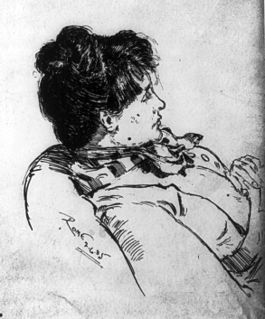
Elizabeth Robins Pennell was an American writer who, for most of her adult life, made her home in London. A recent researcher summed her up as "an adventurous, accomplished, self-assured, well-known columnist, biographer, cookbook collector, and art critic"; in addition, she wrote travelogues, mainly of European cycling voyages, and memoirs, centred on her London salon. Her biographies included the first in almost a century of the proto-feminist Mary Wollstonecraft, one of her uncle the folklorist Charles Godfrey Leland, and one of her friend the painter Whistler. In recent years, her art criticism has come under scrutiny, and her food criticism has been reprinted.

Henry Tonks, FRCS was a British surgeon and later draughtsman and painter of figure subjects, chiefly interiors, and a caricaturist. He became an influential art teacher.

Charles Aitken was a British art administrator and was the third Keeper of the Tate Gallery (1911–1917) and the first Director (1917–1930).

Symphony in White, No. 3, is a painting by James Abbott McNeill Whistler. The work shows two women, one sitting on a sofa dressed in white, and the other resting on the floor, with a yellowish dress. The model on the sofa is Joanna Heffernan, the artist's mistress. By calling the painting Symphony in White, No. 3, Whistler intended to emphasise his artistic philosophy of corresponding arts, inspired by the poet Charles Baudelaire. The presence of a fan on the floor shows the influence of Japonisme, which was a popular artistic trend in European art at the time. Whistler was also greatly influenced by his colleague and friend Albert Joseph Moore, and their works show considerable similarities.

Christabel Annie Cockerell was a British painter of children, portraits and landscapes. She married the sculptor Sir George Frampton, becoming Lady Frampton, but continued to exhibit her art using her maiden name.

Académie de La Palette, also called Académie La Palette and La Palette,, was a private art school in Paris, France, active between 1888 and 1925, aimed at promoting 'conciliation entre la liberté et le respect de la tradition'.
Marjorie Sherlock (1897-1973) was a British painter and etcher. Three books of her etchings were published between 1925 and 1932. Her painting Liverpool Street Station, now in the Government Art Collection, was first shown at the Royal Academy in 1917 and in 1987 was at 10 Downing Street when Margaret Thatcher was Prime Minister of the United Kingdom.

Ethel Sands was an American-born artist and hostess who lived in England from childhood. She studied art in Paris, where she met her life partner Anna Hope Hudson (Nan). Her works were generally still lifes and interiors, often of Château d'Auppegard that she shared with Hudson. Sands was a Fitzroy Street Group and London Group member. Her works are in London's National Portrait Gallery and other public collections. In 1916 she was made a British citizen. Although a major art patron, she is most remembered as a hostess for the cultural elite, including Henry James, Virginia Woolf, Roger Fry and Augustus John.
Walter John Bayes was an English painter and illustrator who was a founder member of both the Camden Town Group and the London Group and also a renowned art teacher and critic.

Bertram Charles Percival Park (1883–1972) was an English portrait photographer whose work included British and European royalty. Engravings of his photographs were widely used on British and British Commonwealth postage stamps, currency, and other official documents in the 1930s. His theatrical portraits were the source for two paintings by Walter Sickert.
David Nathan Robins was a British journalist, author, and sociologist who was closely associated with the 1960s and 70s counter-culture. Later he became involved in youth work and write several books on youth culture in Britain.
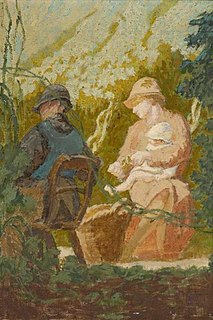
Thérèse Lessore was an English artist who worked in oil and watercolour. She was a founder member of the London Group, and the third wife of Walter Sickert.
Eleanor Dickey, FBA is an American classicist, linguist, and academic, who specialises in the history of the Latin and Greek languages. Since 2013, she has been Professor of Classics at the University of Reading in England.
Christine Drummond Angus was a British illustrator and embroiderer. She made several pieces for the furniture designer Ambrose Heal and her designs were often figurative and included illustrations of children. She was married to the painter Walter Sickert from 1911 until her death in 1920.
References
- ↑ "Professor Anna Gruetzner Robins - University of Reading". Reading.ac.uk. Retrieved 18 February 2016.
- ↑ "Gwen John watercolours found at Princeton University". BBC News . Retrieved 18 February 2016.
- ↑ Professor Anna Gruetzner Robins uncovers new paintings. Reading Art. University of Reading, 20 December 2011. Retrieved 18 February 2016.
- ↑ Ian Buruma. "Obituary: David Robins | Media". The Guardian . Retrieved 18 February 2016.